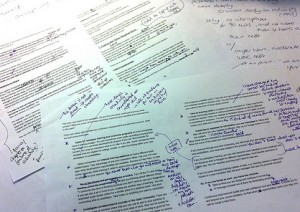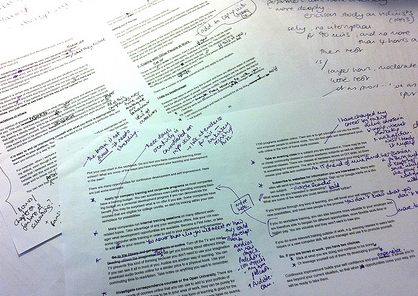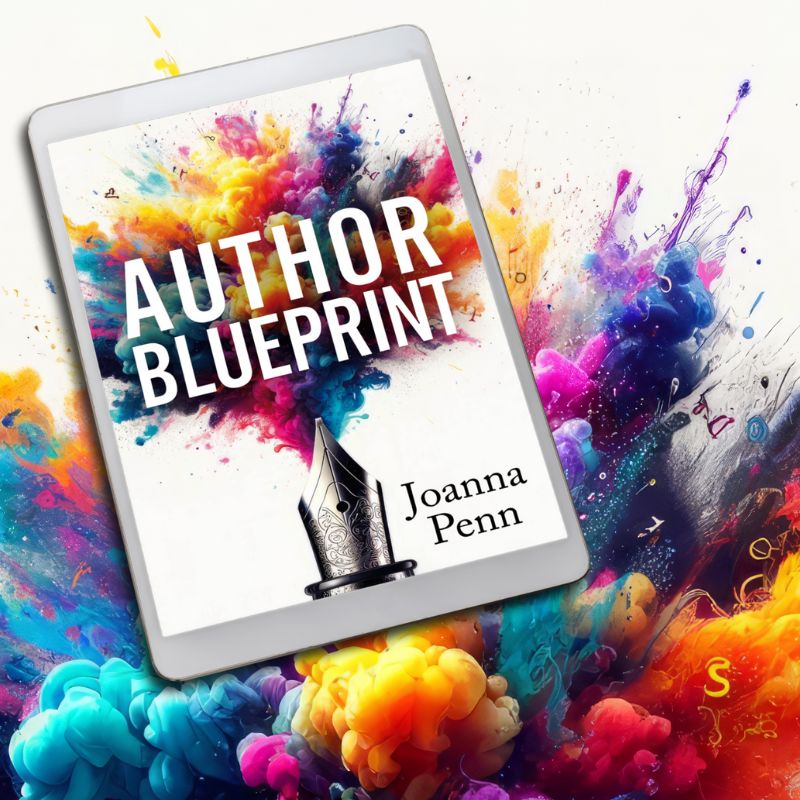OLD POST ALERT! This is an older post and although you might find some useful tips, any technical or publishing information is likely to be out of date. Please click on Start Here on the menu bar above to find links to my most useful articles, videos and podcast. Thanks and happy writing! – Joanna Penn
However many books on writing we read, and however many novels we have consumed in our genre, there are still things that we get wrong as new novelists.
 I know I fall into these traps. I also reviewed a friend's manuscript the other day and found myself telling him exactly the same things. So I thought you might like to add your thoughts as well since we can all learn from each other. Please do leave a comment below with your top mistakes of new fiction writers.
I know I fall into these traps. I also reviewed a friend's manuscript the other day and found myself telling him exactly the same things. So I thought you might like to add your thoughts as well since we can all learn from each other. Please do leave a comment below with your top mistakes of new fiction writers.
This is not an exhaustive list, but just some obvious things that, if fixed, may transform your manuscript. Aspects may also vary by genre.
(1) Show, don't tell.
Now I know why editors and publishers say this over and over again. It really stands out in a manuscript when you read with a fresh eye. If the Nazis are marching into a French village, don't report the event in third person. Instead, relate the event from the point of view of a character in the crowd. Make it personal and show their reaction to the event by their behavior. Deep, interior monologues can be replaced with characters doing something or saying something.
(2) Consistent Point of View (POV)
I don't think I really ‘got' point of view until I paid for my first professional edit. I jumped into the heads of the different characters within one scene which can be confusing for readers. Yes, some writers do it but it's best to get POV sorted before you start playing around.
POV is also easier if you think in terms of writing scenes. Each scene has a setting, something happens to advance the plot or reveal character, and there is a point of view. Who is telling the story? Then be consistent within the scene, or if you change heads, then only do it once. There's no exact science to this, but there are some conventions that make it easier for the reader.
For more on story engineering, check out Larry Brook's fantastic tips in this interview.
(3) Deliver on the promise you make the reader.
If there is a murder at the beginning, then we need to know who did it by the end. No matter if it is a massive 7 part series. The story arc in the one book needs to be complete. This is one of the reasons I personally don't like serial books. I like my story to be encompassed in one book. I want the payoff of a good ending.
There needs to be coherence around theme, character arc, plot as well as delivering to the promise of the genre you advertise the book as. I'm writing action-adventure thriller, so I can't spend half the book in one room pondering the world as a literary fiction author could. If you're writing romance, there needs to be a happy ending. (Although apparently, a love story can have an unhappy ending in the vein of Nicholas Sparks!)
(4) Overuse of first names in dialogue
This jumps off the page as the sign of an amateur, and I am absolutely guilty as charged in my first novel. Read your dialogue out loud – with another person. Someone has commented on the blog before about reading it aloud to a recorder and then playing it back again. This is all time-consuming though. I notice this in a lot of indie books.
(5) Overuse of exclamation marks
Yes, this can be fixed by a proof-reader/ copy-editor, but sometimes the text needs to be rewritten as well as the excess punctuation removed. It's trying too hard to communicate emotion to the reader, without showing it in the action or behavior of the character.
Tips on usage from The Perfect Write.
“Some experts feel that exclamation points are the sign of a lazy writer, or worse–an amateur. Whether the rationale for either opinion is sound or not, there are well-grounded reasons for both.”
Conclusion: we can all improve.
One of the marvelous things about being a writer is how we can keep improving. Every word we write can be a step towards improvement. The editing process is all about improvement, about making the book the best it can be. Get people reading your work and critiquing it. We have to keep learning and this is the only way.



I think the “show, don’t tell” advice has become so popular that now both new and seasoned writers are bending towards showing too much without telling anything. They show and show until you wat to throw the story away. It turns out to be so subtle that you don’t understand what the theme is about. So I disagree with you on that point.
Great post, and great discussion!
On show, don’t tell, I see some writers do BOTH–they tell something (to get it out of their system, maybe?) and then proceed to show it. Often when I edit writers, I’ll point that out and say, “Just cut this whole section. You showed it better below.” This kind of thing can be part of the repetition issue.
On point of view, the best book I’ve eve read on it is Character and Viewpoint, by Orson Scott Card. Fantastic. So, so good. When it comes to switching heads or POV, it’s crucial to know what you’re doing, what the rules are, and why certain writers can get away with it. (One of those “don’t try this at home” things.)
And on prologues–I like reading them, but in much of my editorial work, they don’t fly. A lot of beginning writers rely on prologue for the wrong reasons, and it ends up weak by itself, and possibly weakening the whole.
One last thing I see a ton of in clients’ work is punctuation issues. Yes, hire a pro to edit you, but it’s worth learning the rules for commas, semicolons, etc anyway. It’ll make you look far more professional, and likely cost you less on the editorial side anyway.
I also discovered something called “filtering,” where the writer filters the action through the character instead of letting the reader see/hear/experience it for themselves. We do this with phrases like ” I knew/realized/wondered/thought,” “I heard/saw,” and the one I have the hardest time with, “I felt.” For example, instead of saying, “I knew this was it. I would have to do it now,” say “This was it. I would have to do it now.”
Or…”I heard the low rumbling of a growl” becomes “The growl rumbled deep in his chest.”
Excellent point, Dusty. I’ve heard this called Deep Point of View (Deep POV) as opposed to distancing or filtering. Your examples are excellent, and they work in 3rd person too. “He saw the dog under the bed,” becomes “The mutt was under the bed, his nose just peeking from beneath the skirt, his tail creating a disturbance in the ruffles a bit beyond.”
Interesting. I’ve never heard this called “filtering” or “Deep POV” before. I’ve always been taught that this sort of thing was simply necessary to establish and maintain a given character’s POV in a scene. Without it, the reader is left to think that the POV is either omniscient or that the author is speaking.
I don’t object to the labels. I mean, what’s important is that the writer learn and use the technique. I’ve just never heard it called either of these before.
I’m writing my first MS, and I’ve never had any writing classes. I see now that it may be years before my WIP will be edited enough to be called ‘done’. Hopefully I can fix most of these common problems before sending it to an editor.
If anyone can recommend a very patient editor that would like to hold my hand through this let me know.
Hi Crystal, there’s a list of editors on this page:
http://www.thecreativepenn.com/editors/
All the best 🙂
You’re so right – we can all improve. I think it’s helpful to use a combination of helpful feedback and finding things that inspire you to try harder. I have a CP whose gorgeous prose always inspires me and makes me wish I wrote that well.
Thanks for visiting my blog, and I’m glad you reject the ridiculous 2000-words-a day credo. If you’re not inspired to write, you’ll just end up with drivel you have to delete later. Waste of time.
Hmm it looks like your site ate my first comment (it was extremely long) so I
guess I’ll just sum it up what I had written and say, I’m thoroughly enjoying
your blog. I too am an aspiring blog writer but I’m still new to the whole thing. Do you have any helpful hints for novice blog writers? I’d really appreciate it.
Hi Georgetta, on blogging, there are a load of free articles and audios here
http://www.thecreativepenn.com/marketing/
I also have a multimedia course on blogging for authors here:
http://www.thecreativepenn.com/blogging/
Have fun!
A problem I remember from my first (unfinished) novel was the “moping scene.” Instead of focusing on events relevant to the plot, my protagonist spent scenes just lamenting about the outside world.
I think this is a result of our headline-driven media. “Tsunami Destroys Village,” etc. We absorb so many headlines that we want to regurgitate them into a story, when we should really just cut to how the character feels about the events and people closest to the story.
As a reader, it drives me nuts when the author changes the POV from one character to another without making the change obvious, (not head-hopping.) All it takes is some extra white space, although it may help to include a small graphic or multiple repeated characters centered in between. For example:
—–
only centered. That’s giving the reader a heads up that something is different. Helps for a scene change within the same chapter, too.
These little ‘clues’ are appreciated by a lot of readers.
I see the allusory use of “it” in so many of the writings I critique.
As an example, the writer may have wrote, “John found the book in the cellar. It was full of secrets.” What does “it” refer to as being full of secrets–the book or the cellar?
I may point out to the writer that by just adding the word “pages” to the second sentence, as in “Its pages were full of secrets”, that no question remains as to what is “secret”; it’s obviously the book and NOT the cellar.
I just see this way too much in the writing of beginners and it drives me nuts! How about you?